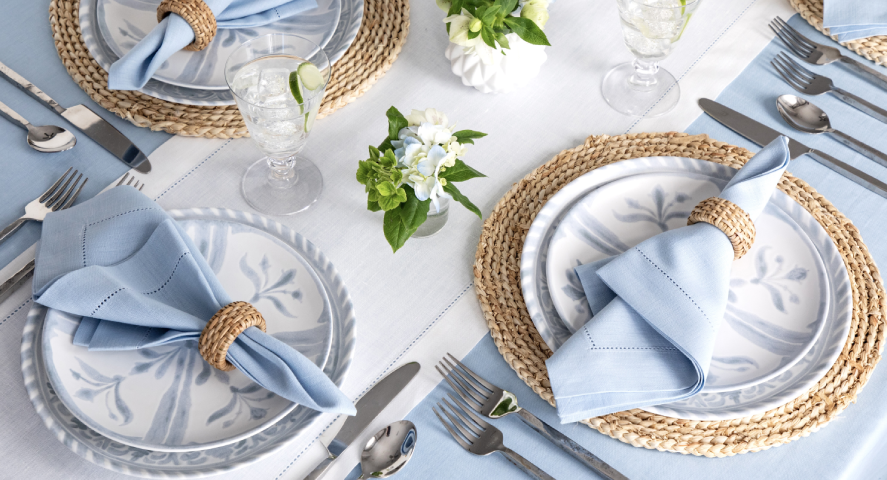Linen tablecloths, napkins, placemats and table runners all help take a table to new heights. They all add that little bit of class to the dining experience. It’s why the French and upmarket restaurants always insist on beautiful white starched linen cloths.
And talking of which, London Hilton’s Head of Laundry, Katarzyna Kurylek has a great tip for getting food stains out of laundry. @LondonHiltonPL says: “Cover [the stain] with artificial sweetener as soon as it gets on to the fabric. The fine powder absorbs the oil and prevents it from making a permanent stain.
The only reason linen wouldn’t enhance a table setting is if it’s not in great condition i.e. if it hasn’t been cared for and washed properly. And that’s why we’ve written this blog post right here. There’s no point paying for beautiful linen only to waste it in the washing machine. So, here’s how you should be treating your beautiful linen tablecloths, runners, napkins, placemats etc:
Vintage v contemporary linen tablecloths
By their very nature linen tablecloths and napkins in particular are going to suffer from spills and stains. If your table linen has been passed down through generations of your family, it’s what we call vintage linen and you’ll have to be particularly careful when washing this.
It’s far more delicate and less sturdy than the more practical linen tablecloths etc. we have today. Because of this, it’s best to wash vintage linen by hand. Contemporary linen can mostly be machine washed, provided it is at a low temperature since hot water can cause linen to shrink or may even weaken fibers in the material. Always use a mild detergent too.
Having said that, it’s not a bad idea to hand wash it either to keep it looking pristine. And here’s how to do that:
Handwashing your linen
- Fill a sink with lukewarm water and add some gentle laundry soap. Add a little bleach if your clothes are white (always separate white and colored linen). Stir up the water with your hands.
- Add the linen and leave for 10 minutes to soak. After this time has lapsed, rub (but don’t scrub with a brush as this will weaken the material) and squeeze to wash out the stains. When finished pour out the water, fill with water again to rinse out the linen. Keep doing this until no soap residue remains (you may have to refill the sink a few times).
- Hang the tablecloths etc. out on the line to air dry. They can also be put in a dryer, provided the temperature is low. Never wring out the linen before drying.
Dry cleaning
One of the biggest bugbears of linen is how wrinkled it can get and in this instance dry cleaning can be helpful. It saves you ironing out all those wrinkles for a start.
If you do decide to wash and iron at home do this with your iron set on a low to medium heat, and while the linen is still damp. Or, if it’s dry then dampen a towel and place it over the linen before ironing flat.



















